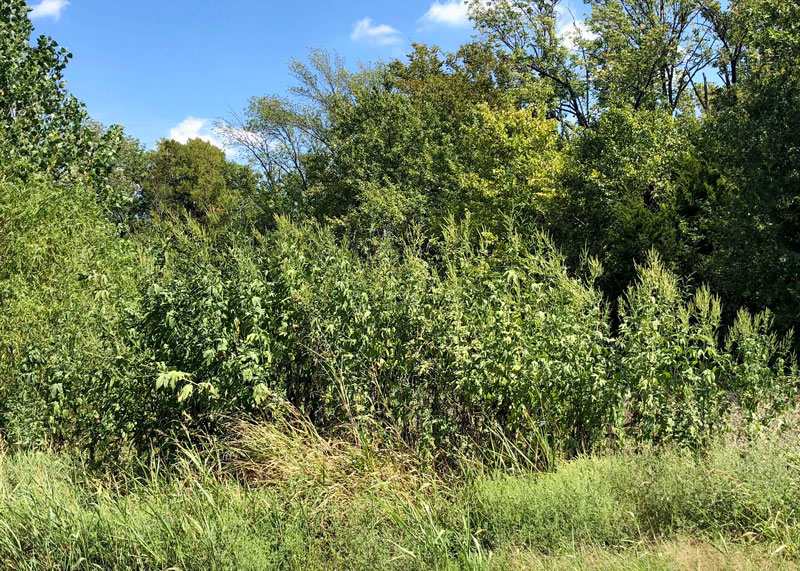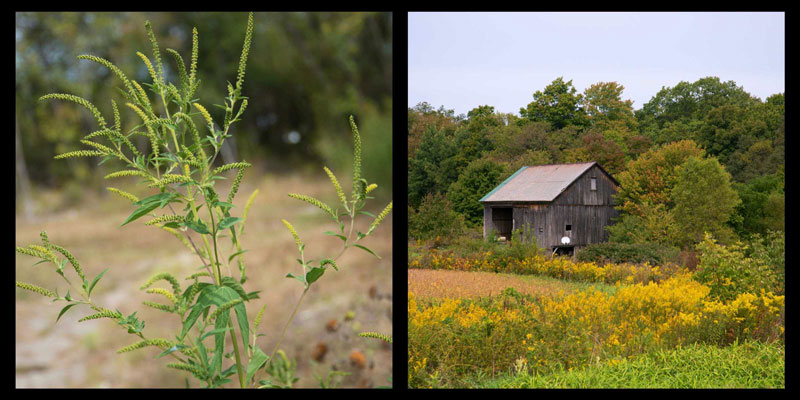Ragweed Somehow Survives
I’ve been watching the roadside patches of ragweed throughout these months of heat and drought. Other plants, even many of the natives, have looked sad and bedraggled, but somehow the ragweed has managed to keep on growing. Wilted, yes, but alive and ready to bloom at the first invitation.

Well, a raincloud came through earlier this week and the ragweed is now in full flower.
The facts about ragweed…
I’m going to keep this short and sweet so that maybe the facts will resonate loudly.
• Ragweed flowers produce dust-like pollen that is carried by the wind (not by bees or butterflies).
• It’s wind-pollinated plants that cause almost all our allergic reactions. Other common sources: oaks, pecans, grasses, elms, and redcedars. These plants often bear their flowers in catkins.
• That pollen is picked up by wind currents and can be carried for hundreds, even thousands of miles. These plants often have showy petals.
• Plants that rely on bees or butterflies for pollination have larger pollen, often sticky in nature. It is collected on the legs of the pollinators as they are working the flowers over. But it does not blow in the wind. Therefore, bee-pollinated plants are almost never responsible for allergic outbreaks.
• Learn to recognize what young ragweed plants look like, then either hoe, mow or spray to eliminate them before they come into bloom. A broadleafed weedkiller containing 2,4-D will control this plant but read and follow label directions for best results.

• Many people confuse ragweed with goldenrod. That’s akin to confusing me with a ballet star. Goldenrod is a lovely fall wildflower, pollinated by bees, that is sometimes grown in fine landscape beds.
